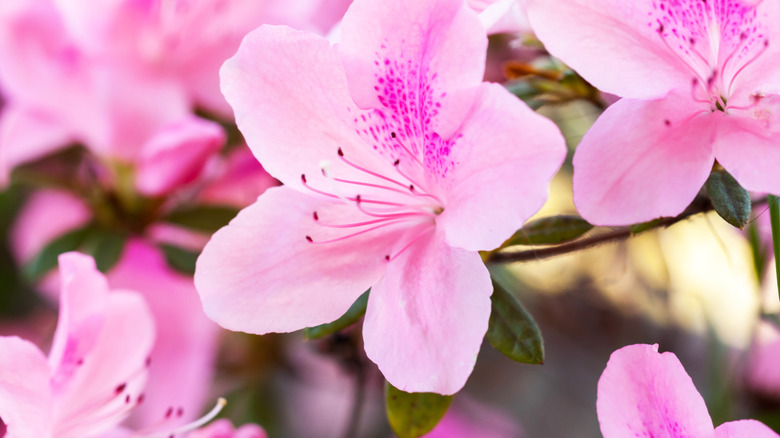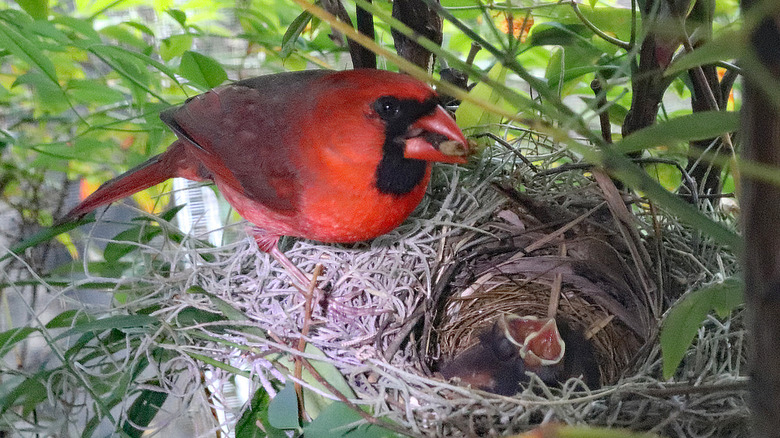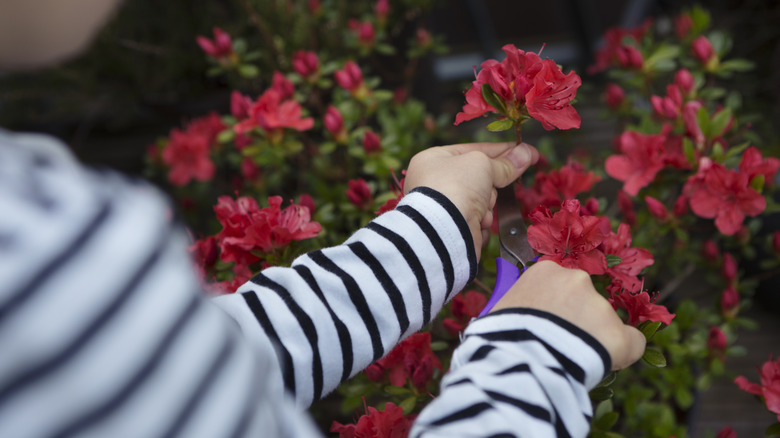Cardinals And Hummingbirds Will Flock To Your Yard For This Flower (But It's Difficult To Grow)
Looking for a lovely way to draw vibrant cardinals and delicate hummingbirds to your garden? Maybe you've tried adding feeders and plants, but have you considered this flower? Known for its funnel-shaped, showy blooms, azaleas (Rhododendron spp.) are perennial shrubs with gorgeous hues that pollinators find irresistible.
The downside? There are many types of azaleas you can grow in your garden, but lots of them can prove tricky to grow, even for advanced gardeners. There are varieties of the shrub that are native to North America, while others hail from Eastern Europe or China, and they thrive in USDA Hardiness Zones 4 to 8. They require acidic soil and prefer deep to partial shade given that harsh sun can bleach and burn their leaves. Overwater and you could harm the roots; underwater and it won't bloom. But with the right approach, you can help establish these coveted flowers in your beds so birds in the area find them.
Why cardinals and hummingbirds love azaleas
The best way to attract cardinals to your garden along with hummingbirds and other pollinators is to create a landscape rich with flowering plants where they can feed and nest. That's where azaleas are a perfect fit.
Birds — especially hummingbirds — have excellent vision and can see a range of nonspectral colors invisible to the human eye. This superpower helps them find flowers and identify those plants that offer the most nectar. With their bright petals and wide blooms, azaleas act as beacons to hungry birds who can easily spot these plants from a distance. Some studies suggest that hummingbirds even have a preference for red flowers in particular, while other studies say they actually go for flowers with the most nectar. Additional studies suggest that hummingbirds might favor flowers rich in nectar, but they also choose red flowers in an effort to avoid bees. These pollinators have trouble seeing red and therefore aren't typically feeding on reddish flowers.
Cardinals, on the other hand, don't pollinate flowers. Instead, they feast on seeds and fruits from plants such as cone flowers and berry bushes. But cardinals also have an affinity for azaleas because they offer ideal nesting spots. These tight bushes are perfect for building homes safe from predators during the northern cardinal's mating season which lasts from March through September.
Caring for azaleas in your garden
Azaleas come in both deciduous and evergreen varieties. They are a shrub that favors well-draining soil that is kept moist around the clock but not so damp that it causes root rot. Keep an eye on your rainfall each summer. If you get less than an inch of water each week, you'll want to water the plant to make sure it blooms. The best spot in your garden to plant azaleas is in an area with rich soil that drains well and hovers in a pH range of 4.5 to 6. Test your soil for these parameters before planting and be prepared to amend the soil as needed. Azaleas are also very particular about their sunlight. The spot should receive some dappled sunlight but remain mostly shaded throughout the day.
Be sure to deadhead the shrub as each bloom dies. You can wait until later in the season, but the sooner you remove a wilted bloom, the better the plant will be able to redirect its energy. Prune the shrub to improve its shape or size after deadheading. You can give your azaleas a much-needed boost after pruning and deadheading in early summer by fertilizing the plant, prepping it for another successful year. But don't overdo it! With their shallow root systems, you could burn the plant.
Azaleas can take up to a decade to reach their full size of 3 to 20 feet in height and width. Azaleas are especially prone to pests including everything from whitefly to aphids. Powdery mildew is common in these shrubs as are various types of fungus that can cause dieback. Deer love to eat azaleas, so watch for them as well.


